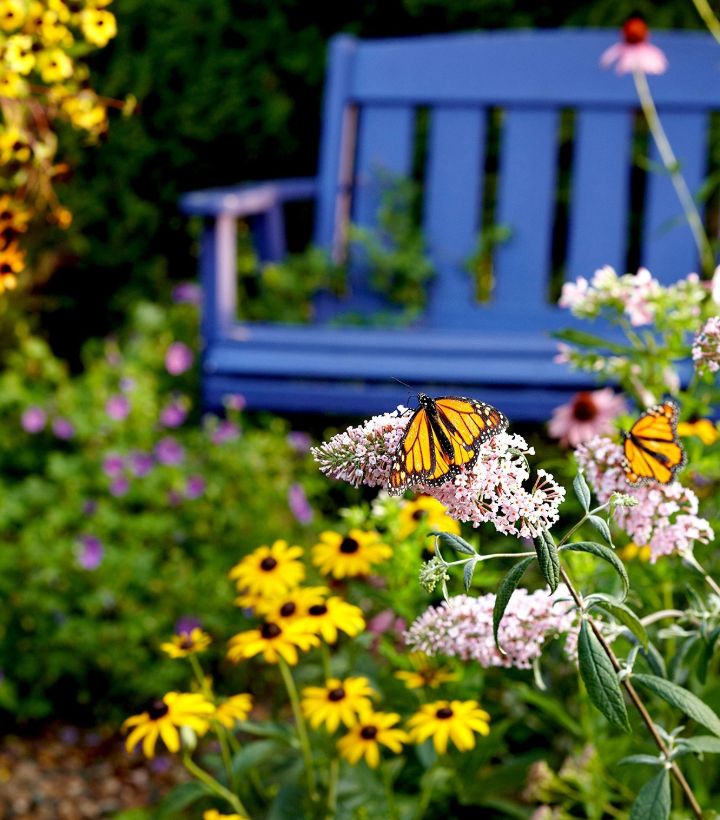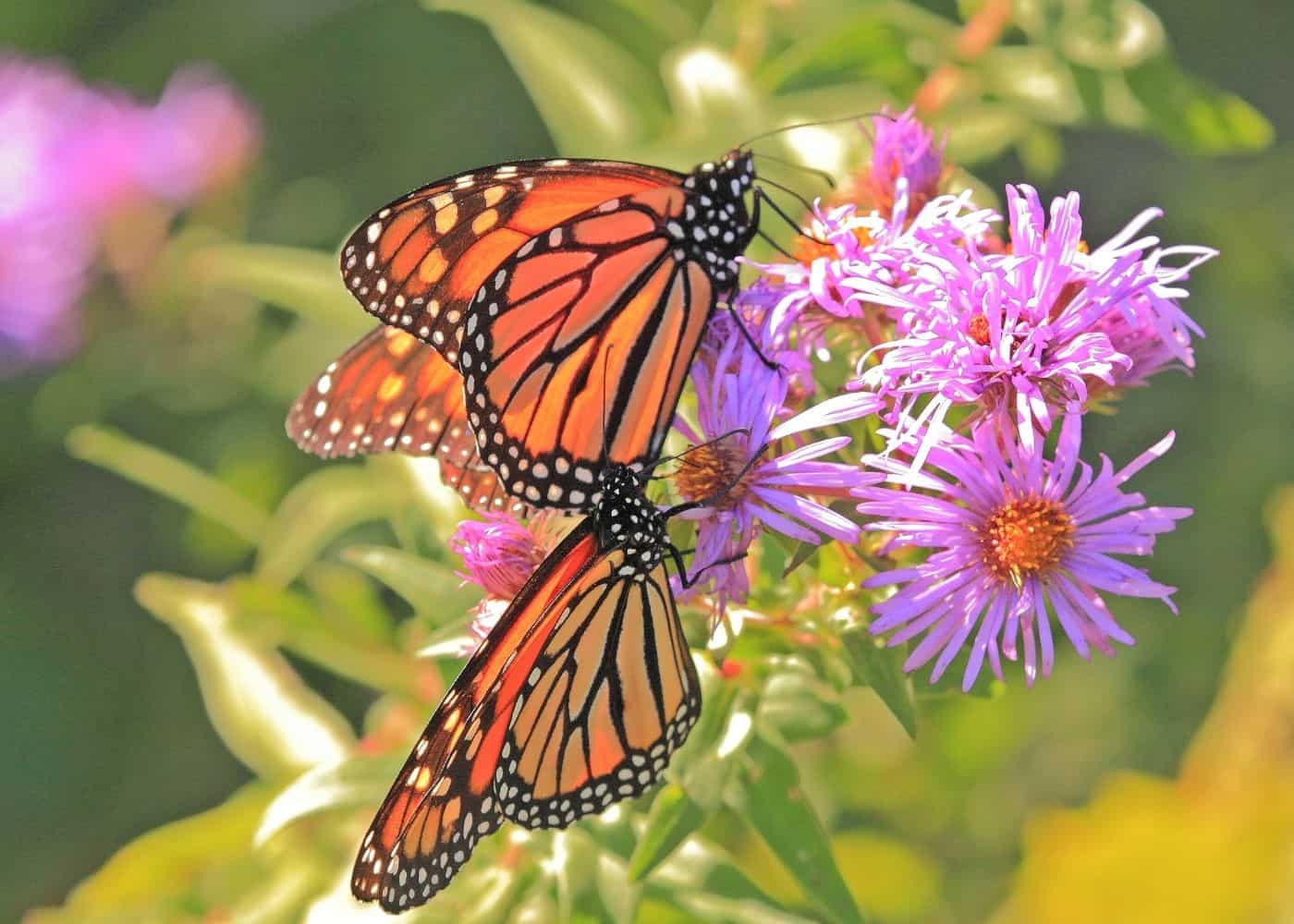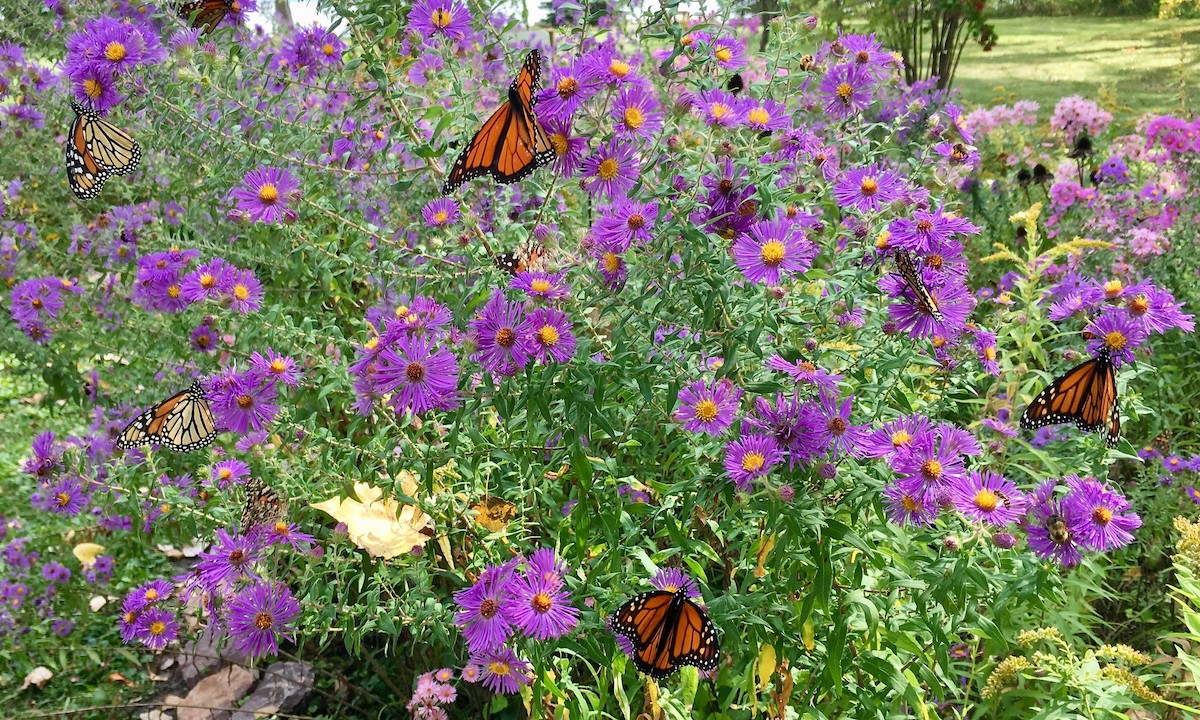Creating Butterfly Gardens: Practical Solutions for a Thriving Habitat

Butterfly gardens often get reduced to a “plant and hope” formula—pick some flowers, avoid pesticides, cross your fingers. That’s not how you build an ecological sanctuary or reap the real rewards of pollinator gardening. After helping design dozens of butterfly gardens—from cramped city balconies to sprawling rural plots—and troubleshooting failures that nearly sent me back to basic begonias, I’ve distilled what actually works into a hands-on, research-backed system.

This guide breaks through generic advice with field-tested strategies, cautionary tales (including my own spectacular flops), and the “why” behind every actionable step. If you want a garden that sustains butterflies and becomes a living science classroom, read on—you won’t find another guide this detailed or honest.
1. Why Butterfly Gardens Aren’t Just Nice-to-Have
If you’ve ever watched a monarch glide into your yard and thought, “I’d love to see more of those,” consider this: Nearly 90% of wildflower-rich prairie in North America has vanished in two generations. Native butterflies are down to isolated pockets. Your garden is no longer decoration—it’s rescue habitat.
A real butterfly garden:
- Completes the butterfly life cycle: It never stops at flowers for adults; it supports eggs, caterpillars, chrysalises—every generation.
- Pairs host and nectar plants: A fact missed by most landscaping companies (I learned this the hard way after my first “pretty but barren” bed). If you’re unsure about the difference, or want to maximize both, see The Role of Nectar Plants vs Host Plants in Butterfly Gardens.
- Creates microhabitats: Basking rocks for warmth, wind-blocks for rest, puddling sites for minerals—not just aesthetics.
- Goes chemical-free: Even so-called “natural” sprays can devastate larvae; residues linger far longer than labels admit.
It doesn’t matter if your plot is 10 square feet or 10 acres—the principles scale up or down. The only non-negotiable: match your plant choices to local species’ needs.
2. Understanding Butterfly Biology: The Hidden Blueprint
The Four-Stage Life Cycle
Every butterfly passes through four stages—miss one and you cut off population growth at its knees:
- Eggs (laid exclusively on specific host plants)
- Caterpillars (limited diet—monarchs only eat milkweed; black swallowtails devour parsley/dill/fennel)
- Chrysalis (needs undisturbed vertical stems or tucked foliage)
- Adult (requires continuous nectar)
When I skipped adding parsley one season (“Who wants messy umbel stalks?”), swallowtails stopped visiting entirely—even though nectar was abundant.
Native Plants: The Non-Negotiable Core
Native species aren’t just tradition—they’re biological contracts signed over millennia. Data from University of Delaware’s Tallamy Lab confirms: native-heavy gardens support up to 35x more caterpillar biomass than exotic-filled yards. For a targeted list of region-appropriate choices, check out Best Native Plants to Attract Butterflies to Your Garden.
Microclimate Engineering
Butterflies are sun-seekers but fragile in wind/gusts:
- Minimum six hours direct sunlight = active feeding/breeding
- Dense shrubs/fences = essential windbreak/resting shelter
- Open ground + layered plants = hunting/egg-laying opportunities
Adding shallow mud trays? I once watched eight different species puddle side-by-side during an August drought—a sight you’ll rarely get with plain birdbaths alone.
3. Step-by-Step Setup: From Blank Slate to Biodiversity Magnet
Having coached both first-timers and frustrated returnees, here’s the system that converts wasted effort into seasonal success:
Step 1: Site Selection—Get Ruthless About Sun
Track sunlight hourly across several days; don’t trust memory alone (my early beds languished until I mapped actual patterns). Butterflies simply won’t settle where shade dominates after noon.
Step 2: Identify Your Local Species
Use iNaturalist or eButterfly.org + local Audubon lists.
Create your own “butterfly target list.”
For example:
- Monarch? Milkweed is mandatory.
- Tiger Swallowtail? Opt for tulip poplar or wild cherry as larval hosts.
My best results always came from matching host plants to local flyers—not guessing based on catalog prettiness. If you want help recognizing what’s likely to visit, see Common Butterfly Species You Can Attract and Identify in Your Garden.
Step 3: Garden Layout—Think Like a Butterfly
Draw zones:
- Mass each plant species in wide patches (butterflies skip isolated stems).
- Layer heights so adults can feed while caterpillars hide below.
- Add sun-baked rocks/logs mid-bed for basking.
Aim for roughly:
- 30% host plants
- 50% nectar sources
- 20% shelter/puddling features
I ignored this ratio once and saw adult numbers spike—but caterpillars vanished within weeks due to lack of larval food sources.
Step 4: Plant Sourcing & Selection
Skip big-box stores unless you know their stock isn’t treated with neonicotinoids (“Bee-Friendly” tags can be misleading). Local native nurseries are safest—even if pricier ($5–9 per quart pot). For budget builds, swap seeds with neighbors or use regional wildflower mixes ($25–$40 covers ~250 sq ft).

Don’t stick slavishly to classic lists either; try violets (fritillaries) or passionvine (Gulf fritillary)—the overlooked options are sometimes jackpot hosts!
Step 5: Soil Prep & Installation
Break up existing soil at least six inches deep—roots fight compacted earth otherwise (learned when half my first milkweeds stunted out by July).
Add compost sparingly if planting natives—they often want leaner soils than veggies do.
Leave bare earth patches around water dishes/mud puddles; mulch the rest lightly with shredded leaves/wood chips no deeper than an inch.
Step 6: Watering & Maintenance
First three weeks post-planting demand diligence—a single dry spell can doom new roots before they establish resilience.
Afterward? Most natives thrive on neglect but will appreciate extra drinks during heatwaves (>85°F) especially in sandy soils.
Deadhead spent blooms weekly to extend flowering periods; regular weeding prevents invasive takeover without chemicals.
4. Avoid These Costly Mistakes
My bookshelf is full of beautiful-but-useless guides that never mention real-world setbacks like these:
Mistake #1: Sacrificing Function for Looks
Early on I filled beds with knock-out ornamentals—only later realizing zero larvae survived because none were true host plants! Always double-check both adult and larval requirements before buying anything cute from the nursery bargain bin.
Mistake #2: Assuming All Pesticides Are Safe
Even OMRI-listed products can nuke caterpillars; residue stays lethal weeks later even if rain seems to wash it away (“organic pyrethrum” taught me this lesson after wiping out an entire brood). For safer alternatives, see Avoiding Pesticides: Natural Pest Control Methods for Butterfly Gardens.
Mistake #3: Overcrowding Equals Zero Airflow
Beds crammed tight look lush but breed fungal blight overnight—in humid climates especially, leave ample space between mature specimens even if it means waiting out bare patches year one.
Mistake #4: Single Bloom Season Syndrome
All-your-blooms-in-June means famine by July/August—a mistake I made twice before charting bloom periods and overlapping succession plants instead (herbs like oregano let run wild help bridge late gaps).
Mistake #5: Neglecting Shelter/Water
The prettiest flower patch still fails if there’s nowhere safe from wind or no mineral-rich puddle source nearby—I started seeing consistent visitation rates only after adding both features intentionally.
5. Advanced Tactics for Serious Results
Ready to go beyond “just flowers”? Here’s how master-level gardeners optimize every square foot:

Layered Plantings Mimic Wild Meadows
Stack short groundcovers (creeping phlox, wild strawberry) below waist-high perennials (echinacea, bee balm), capped by small native shrubs (spicebush, blueberry) at bed edges.
The increased vertical diversity physically shields vulnerable chrysalises—and data shows over-winter survival rates improve ~20%.
Year-Round Habitat Elements
Don’t clear-cut everything in fall! Leave ornamental grasses and brush piles standing until spring—the number of overwintering pupae you’ll spot next March will shock you compared to manicured spaces left bare all winter.
Evergreens act as both visual anchors and cold-weather refuges; inexpensive ($20–$40) plugs rapidly fill border gaps if started early in moist soil.
Citizen Science Integration
Register your garden with Monarch Watch/NABA/Project BudBurst—you’ll be amazed how much sharper your identification skills get when logging observations regularly.
Plus, citizen scientists catch rare migrants otherwise missed entirely—I logged my area’s first painted lady sighting last September thanks purely to systematic tracking!
Certification Adds Value—And Accountability
Apply for NABA certification (~$15 application fee)—it raised neighborhood interest so much my local elementary school now uses our backyard as their spring science field trip destination annually!
Certified plots also attract more city grants/support when expanding public pollinator corridors—a game-changer for community projects working on shoestring budgets (<$200/year).
6. Tools & Resources You Actually Need
Ignore glossy catalogs promising fancy gadgets—you need basics first:
| Tool | Best For | Insider Tip |
|---|---|---|
| Watering Can/Hose | Gentle root watering | Use a rose head for seedling safety |
| Pruning Shears | Deadheading/pruning old stalks | Disinfect blades between cuts |
| Field Guide/App | Quick ID/check bloom times | iNaturalist = citizen scientist gold |
| Hand Trowel | Transplants/weeding | Invest in stainless steel |
| Rain Gauge | Track rainfall vs irrigation needs | $8 plastic models work fine |
Upgrades worth considering after year one:
- Wildlife camera traps ($60–$120): Document shy/nocturnal pollinators,
- Soil test kits (~$15–$30): Diagnose persistent plant failure,
- Collapsible observation stool ($20): Essential for long-term monitoring sessions without back strain!
For learning/staying current:
- "Bringing Nature Home" – Doug Tallamy sets the ecological foundation;
- Xerces Society (xerces.org) – authoritative regional lists/tips;
- NABA (naba.org) – garden certification + advocacy;
- County ag extension offices – hyper-localized growing tips invaluable against broad-brush national advice;
- iNaturalist app – transforms passive watching into participation/contribution at a global scale!
7. Real Results—What Works Where?
Nothing beats learning from others’ trial-and-error:
Urban Balcony Success (Houston TX)
Maria installed two deep planters with swamp milkweed/coneflower plus DIY pebble-mud trays changed weekly; despite fourth-floor height she logged monarch egg clusters within two months! South exposure offset urban heat/wind issues perfectly—the kind of insight standard guides miss entirely. For more tips on maximizing small spaces, see How to Create a Butterfly-Friendly Habitat in Small Spaces.
Community Pollinator Strip (Vermont Town Green)
With just $150 spent on seed plugs + mulch strips along park fencing, volunteers created alternating early/mid/late bloom zones using golden alexander (host), bee balm/asters/goldenrod—all planted in dense rows rather than scattered individuals after seeing sparse visitation year one.
Results? Verified uptick not just in butterflies—but also over twenty additional pollinator species including rare solitary bees within two years!
Schoolyard Native Meadow Conversion (Midwest Elementary)
Turf sod replaced incrementally with wild bergamot/spicebush plus stepping-stones for kid observation points; twelve butterfly species identified by students their very first season versus just three previously—insect diversity doubled as measured by simple sweep-net counts taken quarterly by faculty advisors!
Common denominator? Not money spent nor plot size—but ruthless adaptation based on real-time observation and local adjustments year-over-year rather than executing someone else’s cookie-cutter plan blindly.
8. Troubleshooting With Experience On Your Side
Every expert gardener has botched entire seasons—here’s how veterans recover faster:
No Butterflies After Initial Setup?
Check presence of BOTH host AND nectar species matched exactly to local targets using detailed guides—not internet wishlists! Also verify surrounding pesticide drift hasn’t wiped populations clean outside your fence line…

Plants Dying Despite TLC?
Most common causes:
- Sunlight mismatch,
- Persistent herbicide legacy from old lawns (“ghost kill”—plants yellow mysteriously).
Solution: Move test pots around pre-installation OR get cheap soil test kit from county office before investing heavily again…
Caterpillars Vanish Overnight?
Natural predation is normal—but mass disappearances scream exposure/lack of cover OR wasp attack hot-spots near open fence lines.
Add twiggy debris vertically among plant bases OR weave loose brush shelters nearby—retention improves almost instantly based on season-long observation logs kept since switching tactics myself in ‘21…
Fungal Blight/Mildew Spreads Fast?
Almost always traced back to over-mulching/high humidity between tightly-packed stems—I prune ruthlessly mid-summer whenever dew lingers past noon AND let soil surface dry fully on non-irrigation days…
Remember—the biggest leaps come from reviewing what failed as intently as what flourished!
9. Action Plan Cheat Sheet
Here’s how seasoned practitioners move quickly from plans-on-paper to thriving ecosystem—with specific timeframes:
WEEKS TASKS
--- ---
1–2 Sketch layout / track sun daily / list must-have hosts+nectar sources via field guides/apps
3–4 Source regionally grown seeds/plants / collect rocks/logs/trays / prep tools/supplies ($50+ minimum)
5–6 Prep soil / amend minimally / install core perennials+annuals / add puddling site(s)
7–8 Water deeply post-install / monitor weed emergence / deadhead blooms regularly
Ongoing Document visits/photo log weekly / adjust plant mix each fall based on actual results—not theory!
Pro tip? Keep a cheap spiral notebook handy outdoors—you’ll spot patterns nobody else will notice online (“first monarch arrival always follows second day above 80°F…”). For seasonal adjustments and ongoing care, reference Seasonal Care Tips for Maintaining a Thriving Butterfly Garden.
10. Level Up Year After Year
Once established? Don’t coast!
Rotate annual experiments each season—
Try underused hosts,
Test alternate microclimate combos,
Log new visitor arrivals religiously…
Recruit neighbors/schools/kids into citizen science programs—they’ll help fill data gaps while building shared stewardship momentum long-term!
If burnout threatens?
Join regional native gardening forums/Facebook groups;
Attend county extension workshops;
Volunteer at public demonstration gardens—you’ll pick up advanced tricks faster through shared stories than years digging alone ever could provide…
Above all—
Measure progress not by Instagram likes but by tangible increases in both butterfly diversity AND cumulative joy observing them thrive outside your window each morning…
You’re not just planting flowers—you’re restoring lost worlds one patch at a time!
If stuck mid-season?
Circle back through these steps—99% of problems trace back either to missing lifecycle coverage OR mismatched plant selection… If confusion persists, reach out locally; there is power—and satisfaction—in collective problem-solving that no solitary Google search can match.
Here’s wishing you clouded yellows, zebra swallowtails—and that unmistakable thrill when next year brings more wings than ever before!



